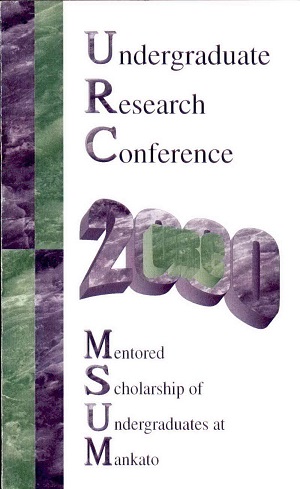Hydrologic Properties of Lake Bottom Sediments in Mills Lake, Minnesota
Location
CSU
Student's Major
Biological Sciences
Student's College
Science, Engineering and Technology
Mentor's Name
Bryce Hoppie
Mentor's Department
Chemistry and Geology
Mentor's College
Science, Engineering and Technology
Description
Sediment cores of the lake bottom sands and clays were analyzed for dry density, porosity, water content, and permeability. A stratigraphy of each core was also recorded, and a helium pycnometer was used to measure dry density, porosity, and water content. A Soiltest® K-605 permeameter was used to measure the hydraulic conductivity of the cores in mixed and native orientations. Reasonable permeabilities were determined at a head of about 70 cm. The dry density ranges from 2.60 g/cm3 to 2.72 g/cm3 porosity ranges from 44.4% to 67.5%, water content ranges from 29.4% to 79.9%; hydraulic conductivity is approximately 1x10-5 cm/s. Future research will include repeating the analyses on samples from different areas in the lake. Results will be mapped in three dimensions and analyzed to estimate the volume of phosphorus in the mud and its movement into the underlying aquifer.
Hydrologic Properties of Lake Bottom Sediments in Mills Lake, Minnesota
CSU
Sediment cores of the lake bottom sands and clays were analyzed for dry density, porosity, water content, and permeability. A stratigraphy of each core was also recorded, and a helium pycnometer was used to measure dry density, porosity, and water content. A Soiltest® K-605 permeameter was used to measure the hydraulic conductivity of the cores in mixed and native orientations. Reasonable permeabilities were determined at a head of about 70 cm. The dry density ranges from 2.60 g/cm3 to 2.72 g/cm3 porosity ranges from 44.4% to 67.5%, water content ranges from 29.4% to 79.9%; hydraulic conductivity is approximately 1x10-5 cm/s. Future research will include repeating the analyses on samples from different areas in the lake. Results will be mapped in three dimensions and analyzed to estimate the volume of phosphorus in the mud and its movement into the underlying aquifer.




